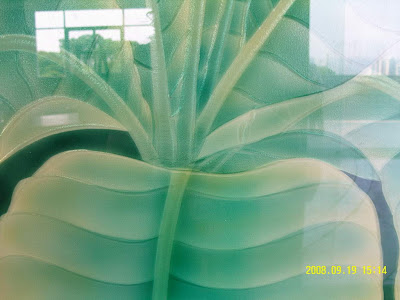Clear GlassGlass is a translucent material allows light to go through. The natural of regular glass has a slight green tone in it especially when looking at its edges. The color of the green tone is determine by the thickness and the size of glass. There are 10 different thicknesses which is for different purpose of use.
2mm = 3/32", 8mm = 5/16"
3mm = 1/8", 10mm = 3/8"
4mm = 5/32", 12mm = 1/2"
5mm = 3/16", 15mm = 5/8"
6mm = 1/4", 19mm = 3/4"
- Windows normally use 3mm to 6mm thick glass
- Interior windows normally use 6mm glass which is installed by using the woodstops or u-channel
- Table Tops normally use 6mm (Someone may use 8mm). If people use it as the table top alone, usually the thickness are from 8mm to 19mm. But most people use 12mm as a standard thickness or some people may prefer to use 15mm to 19mm for luxury.
- Glass shelvings normally use 6mm to 19mm, but it depends on the size and the weight of things that people put on it.
Safety GlassThere are mainly two types of safety glass:
1. Tempered Glass
Tempering is a thermo treatment to an annealed glass. It is normally 6 to 7 times stronger glass. When it breaks, it shatters into thousands of small pieces so that any cutting injury will be reduced to minimum.
2. Laminated Glass
Laminated glass is made by sandwiching a vinyl film in between two pieces of glass. When it breaks, the film will stick the glass together so that any cutting injury will be almost eliminated. The glass are all clear glass, however, the vinyl film in between can be in clear, white, or any other colors. The laminated glass provides an endless spectrum of transparent or translucent color.
Applications for safety glass are: Doors, windows, furniture, railings, shower doors, cabinetry, etc. especially when strength is required and movable panels, ie. swing doors.
Bullet-Resistant Glass is a transparent glass panel which combines the strength and feature of tempered glass, laminated glass and polycarbonate.








